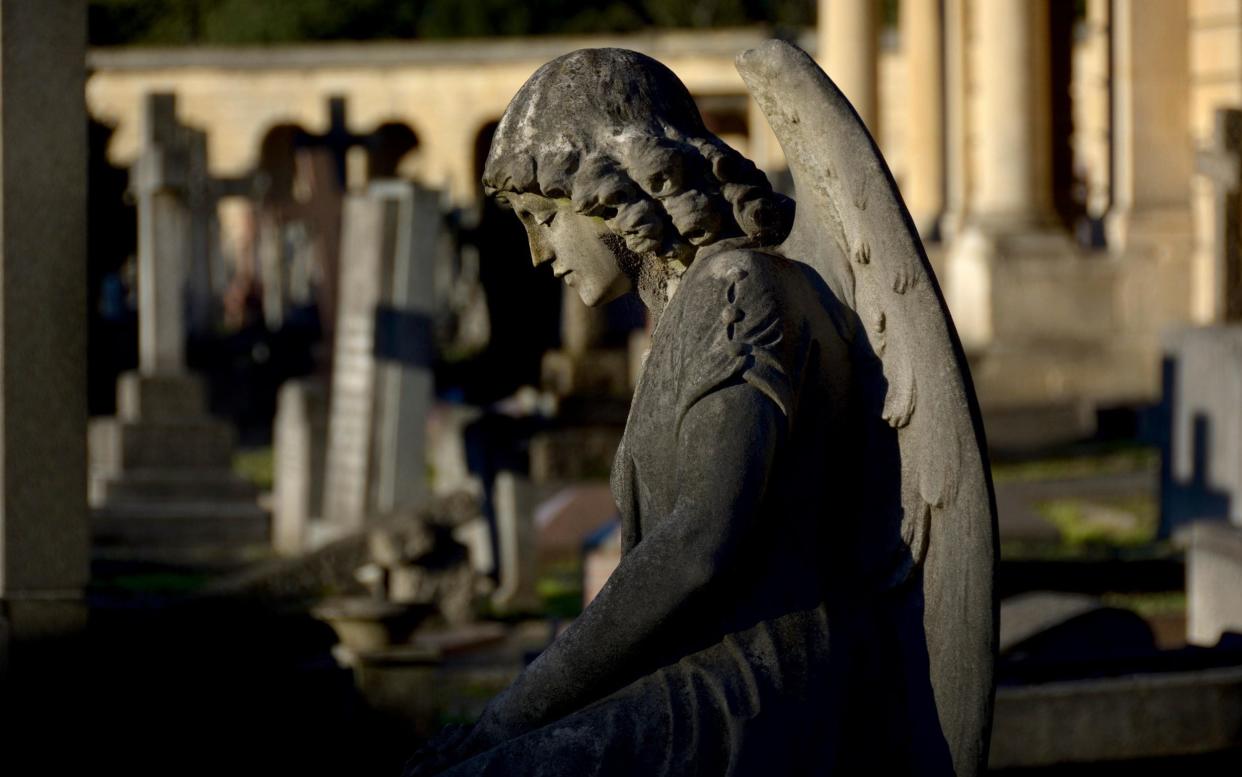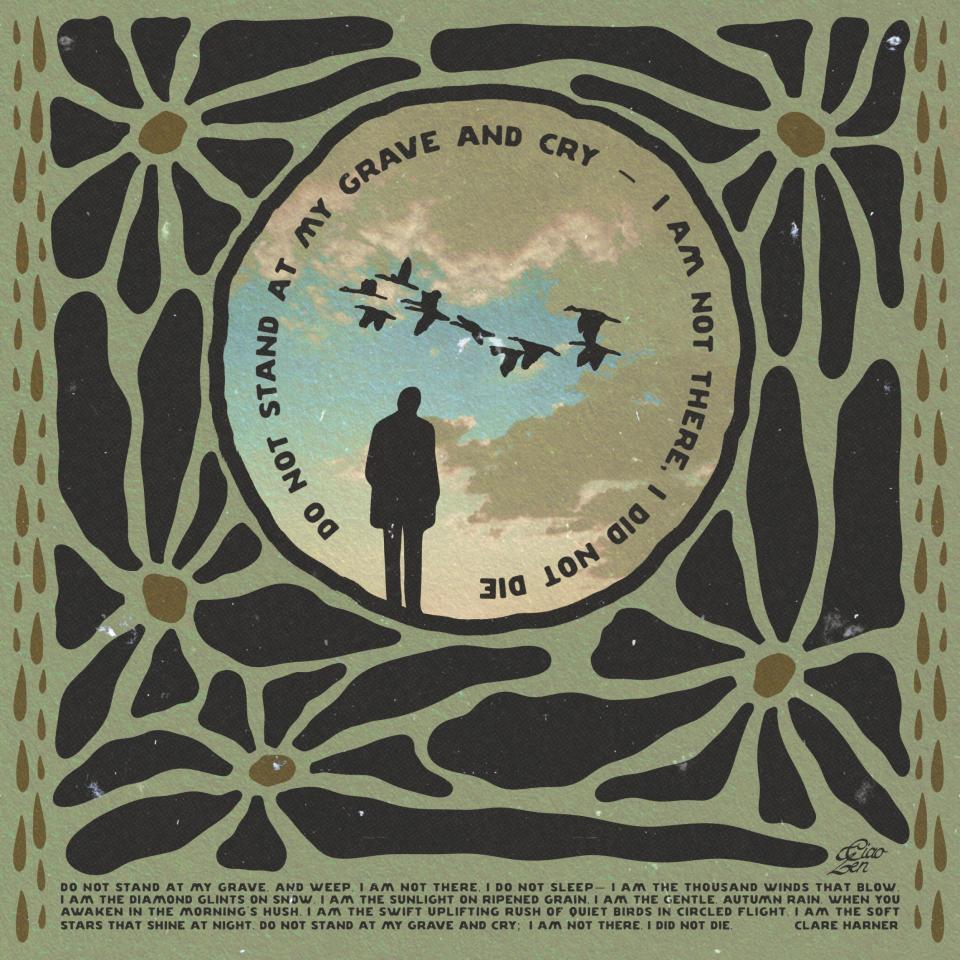The murky past of the world’s favourite funeral poem

- Oops!Something went wrong.Please try again later.
- Oops!Something went wrong.Please try again later.
You probably know the piece of verse that begins “Do not stand at my grave and weep, / I am not there, I do not sleep.” A staple at funerals, it’s been used in films, set to music, and was once voted Britain’s favourite poem. But who wrote it? For decades, it was a mystery.
In 1977, when John Wayne read it at Howard Hawks’s funeral, he credited it to that prolific wordsmith Anon. Years later, a Baltimore housewife, Mary Elizabeth Frye, stepped forward with a touching story about how she composed it in the 1930s, on a brown paper bag, for a young Jewish girl who had fled to America, to console her over the death of her mother in Europe.
When Frye died in 2004, The Times’s obituary proclaimed her “the undisputed author” of the poem. But her story wasn’t true, as I learnt in the final episode of The Poetry Detective (Radio 4), Vanessa Kisuule’s three-part series on the inspiration behind much-loved poems. Kasuule is a very likeable interviewer, and it’s an excellent programme – I’d like more – but her scripted introduction was unfortunate.

The show, she said, is about “the poems that accompany us through this mad simulation that is life”. Sorry, what? Life is a simulation? You can’t just tell us that we’re living in the Matrix, then move straight on to the history of elegiac verse. It made her sound slightly unhinged. Still, Kisuule’s a poet herself. I’ve yet to meet a fully hinged poet. She interviewed an American critic and blogger who has proven that Frye didn’t write “Do not stand…”; he identified the real author just a few years ago, an unsung poet called Clare Harner.
It was fascinating, but he couldn’t answer the big, unasked question: why would Frye lie? Perhaps, Kisuule generously suggested, Frye had somehow convinced herself she really had written it. We’ll never know for sure. The dead keep their secrets.

Can you be an unsung writer if you’re constantly being sung? Yes – if you’re the obscure lyricist for a famous singer. The Essay: Edith Piaf in Five Songs (Radio 3) puts her lyrics, and lyricists, front and centre. As a knuckle-dragging English monoglot, I’ve cheerily hummed along to Piaf in restaurants while barely understanding a word. “Life in Pink”? That sounds pleasant, I’ve thought, dipping my frites in a pot of moules. “No, I regret nothing”? Good for you, Eddie, let’s have another crêpe.
I appreciated the brilliant voice, but not the brilliant storytelling. I was an idiot. It turns out the Little Sparrow’s lyrical milieu is a hell of poverty, prostitution and murder-suicide pacts. Monday’s episode, on the deceptively jaunty Milord, was terrific, while tonight’s will shed light on the lesbian couple who wrote a handful of her most darkly compelling songs, including Les Amants d’un jour.
Lastly, a Mother’s Day tip. If your mum doesn’t like carnations, why not surprise her with rafflesia? Named after Sir Stamford Raffles, it boasts the largest flower on earth, a full metre across. “A brick red colour, splodged with white dots,” it looks like “a lumpy great starfish”, smells like rotting meat, and grows in the Philippines’s Luzon rainforest, where the indigenous population believe it to be evil. If you do pluck a bunch for your floral arrangement, don’t tell Chris Thorogood, “the Indiana Jones of the plant-hunting world”.
He hotfooted from the jungle to a BBC studio for Start the Week (Radio 4) – not even stopping to drop off his suitcase – to tell Kirsty Wark about his quest to protect this highly endangered genus. Slash-and-burn farming, we learnt, is wiping rafflesia out. The plant itself isn’t making preservation efforts any easier, for it is as uncooperative as it is ugly. It’s invisible except when flowering, hiding inside another plant’s vines.
You can’t freeze the seeds to grow later – they don’t like it. And the damned things just won’t breed. Only one man alive knows how to propagate it: a Mr Nagatari of Bogor Botanical Gardens. in Indonesia. His technique involves garlic and throwing stones in the air. He taught it to Thorogood, who sped back to the Philippines to try it. Did it work? “We don’t know yet. It takes three years for rafflesia to develop.”
Start the Week describes itself as “setting the cultural agenda”, rarely a convincing claim. The radio warhorse’s best episodes do nothing of the sort. Monday offered back-to-back interviews about obscure plants with a bouquet of botanists, and was relentlessly interesting throughout.

